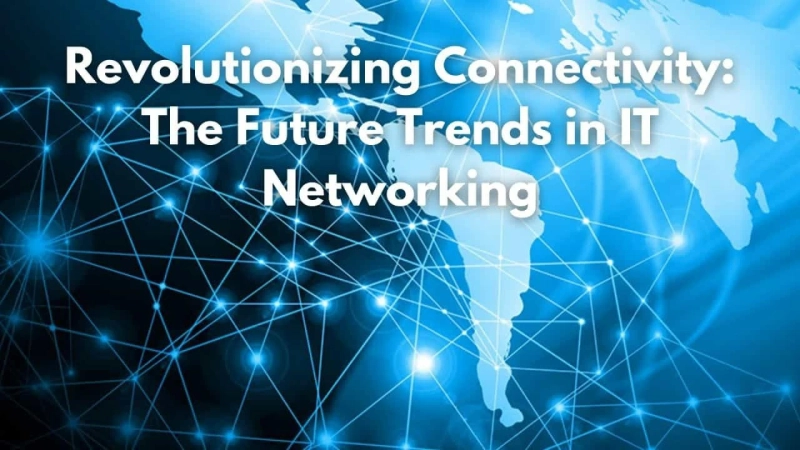In the ever-dynamic realm of information technology, the landscape of networking is undergoing a profound transformation. The advent of new technologies is not just a progression but a revolution, promising to reshape the way we connect, communicate, and collaborate. This article delves into the future trends that are set to revolutionize IT Networking
1. 5G Technology: A Quantum Leap in Connectivity
At the forefront of this revolution is 5G technology, a game-changer in the world of wireless communication. Boasting unparalleled speed, remarkably low latency, and the ability to handle massive device connections simultaneously, 5G is set to redefine the concept of connectivity. It opens doors to transformative applications such as augmented reality (AR), virtual reality (VR), and the Internet of Things (IoT), propelling us into an era of seamless, high-speed wireless communication.
2. Software-Defined Networking (SDN): Redefining Network Management
The paradigm of network management is shifting with the rise of Software-Defined Networking (SDN). This approach separates the control plane from the data plane, providing centralized control and programmability. SDN brings flexibility and agility to network management, allowing for dynamic adjustments and optimizations. It\'s not just a technological evolution; it\'s a fundamental shift in the way we conceive and operate networks.
3. Edge Computing: Localized Processing for Real-time Efficiency
Enterprises are increasingly recognizing the significance of edge computing in optimizing network performance. By bringing computational resources closer to the data source, edge computing minimizes latency and enhances real-time processing. This is especially critical for applications like autonomous vehicles, smart cities, and industrial IoT, where split-second decision-making is imperative.
4. Internet of Things (IoT): The Pervasive Network of Connected Devices
The Internet of Things (IoT) is extending its reach, creating a fabric of interconnected devices that communicate seamlessly. From smart homes to industrial sensors, IoT is revolutionizing how devices interact and share information. This proliferation of connected devices is not just about convenience but also about creating intelligent, data-driven ecosystems that enhance efficiency and decision-making.
5. Artificial Intelligence (AI) in Networking: From Automation to Predictive Analytics
Artificial Intelligence is infusing intelligence into networking. AI algorithms analyze network data, predict potential issues, and automate responses. From self-optimizing networks to predictive maintenance, AI is streamlining operations and enhancing the overall efficiency of IT networks.
6. Wi-Fi 6 (802.11ax): Elevating Wireless Performance
Wi-Fi 6, the latest standard in wireless technology, is set to elevate the wireless experience. With higher data rates, improved capacity, and enhanced performance in crowded areas, Wi-Fi 6 ensures a smoother and more reliable wireless connection. This is particularly significant in an era where wireless connectivity is not just a convenience but a necessity.
7. Blockchain in Networking: Securing Transactions with Transparency
Blockchain technology, known for its role in secure transactions, is finding applications in networking. It brings transparency, security, and decentralization to network transactions. As data integrity and security become paramount concerns, blockchain provides a robust framework for ensuring the trustworthiness of network activities.
8. Network Function Virtualization (NFV): Transforming Network Infrastructure
Network Function Virtualization (NFV) is redefining the traditional approach to network infrastructure. By virtualizing network functions, NFV reduces dependence on hardware, leading to more scalable and adaptable networks. It accelerates the deployment of new services and enhances the overall flexibility of network management.
Embracing the Future: Navigating Challenges for a Connected Tomorrow
As these trends unfold, businesses need to navigate challenges and harness the potential of these innovations. From ensuring the security of interconnected devices to managing the complexities of virtualized networks, the future of IT networking demands strategic adaptation. Embracing these trends is not just an operational necessity but a strategic imperative for enterprises aiming to stay at the forefront of connectivity revolution. The future is dynamic, and those who innovate today will be the leaders of the connected tomorrow.



